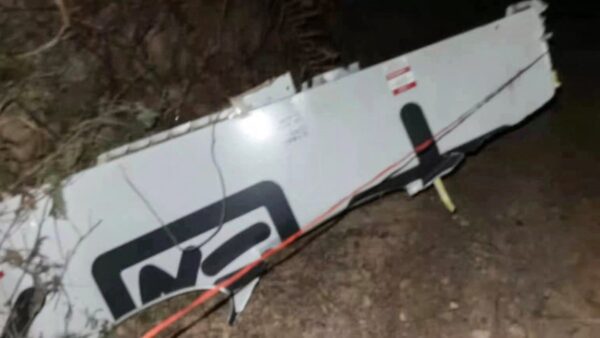[NTD, Beijing, March 24, 2022]China Eastern Airlines flight MU5735 crashed suddenly on March 21, killing 132 people. The incident caused various speculations. Industry experts analyzed that in the last 2 minutes of the plane crashing rapidly, the pilot may have been too late to call for help due to various reasons.
The Civil Aviation Accident Investigation Center of China held a press conference on March 23, introducing that before the plane crashed, the low-altitude communication between the crew and the air traffic control unit remained normal. But the data showed that the plane was falling down at 31,000 feet per minute, or the equivalent of 50 stories per second.
The website from “Mechanical Citizen” recently quoted an in-service captain’s analysis that the decrease in the plane’s altitude started at 14:20:43 Beijing time, and the last data-recorded time was 14:22:35. Less than 2 minutes. One speculation is that the problem may be the right wing, causing the plane to roll 360 degrees along the longitudinal axis, and the pilot may be struggling to control the attitude too late to call for help.
The serving captain, who did not want to be named, explained the possible situations of the last 2 minutes of MU5735. The last 2 minutes of the plane accident can be divided into three stages. The first stage is a continuous descent from the cruising altitude of 30,000 feet. The gradient of this descent is very steep. The second stage is between 7,000 and 9,000 feet. At this altitude, the aircraft has a process of short-term altitude increase, and then the third stage, which is a rapid decrease in altitude until it falls.
The captain analyzed that from the detailed parameter table, the speed, track, and vertical speed of the aircraft changed rapidly in a short period of time. The flight trajectory turned left and right for a while, and the wide range of fluctuations in the lift rate also reflected that the aircraft was in a very unstable and uncontrolled state at that time.
At present, there is an analysis that says, “It can be seen from the altitude change that the pilot was trying to save the plane during the crash, and once stopped the fall and raised the altitude, but in the end it was still unable to turn the tide and crashed unfortunately.”
In this regard, the captain analyzed that the above possibility is indeed high. There is also a possibility that the static stability of the aircraft has played a role in a short period of time, but due to unknown reasons, this static stability balance is quickly broken, resulting in a rapid decrease in altitude after a short rise. This possibility is very small, but in It may exist for a short time when certain conditions are met.
Guess: The pilot may not have time to call for help
The captain guessed that the problem might be the right wing, which caused the plane to roll 360 degrees along the longitudinal axis, and the pilot might have struggled to control the attitude, and it was too late to call for help on the radio.
Another guess is that the aircraft experienced a long-term and large-rate descent phase, and then turned into a short-term, large-rate ascent. Note that the short 10 seconds from 21:45 to 21:55 changed from a descent rate of 1,5744 ft/min to an ascent rate of 3,520 mph. This overload is quite large. For the next six seconds, the rate of ascent is 7,360 feet per minute, which is far greater than a roller coaster ride. This kind of overload is not only unbearable for people who have not received targeted training, but should even be far beyond the normal range of aircraft overload.
At this point, it is very likely to cause blacksightedness or even syncope, making the pilot incapacitated.
A video circulating on the domestic Internet shows that the crashed China Eastern Airlines passenger plane fell straight to the ground with its nose down when it finally crashed. Prior to this, tracking data recorded by Flightradar24 showed the plane briefly climbed after a steep crash for a while. Afterwards, it quickly resumed its rapid fall.
“It’s a weird situation,” John Cox, an aviation safety consultant and former 737 pilot, told Bloomberg. “It’s hard to get the plane to do that.”
That means the pilots on the plane may have struggled to do that, or had a very unusual malfunction, said Benjamin Berman, a former NTSB investigator who flew the 737.
Berman told Bloomberg that there are a number of conditions that could trigger a crash, such as a pilot having a heart attack, accidentally hitting a control stick, or a malfunctioning engine used to raise or lower the nose. But he said such situations tended to result in a briefer response from the plane, as the pilots — at least two pilots on board — could easily correct such mistakes.
(Editor in charge: Wen Hui)
URL of this article: https://www.ntdtv.com/gb/2022/03/24/a103382334.html
